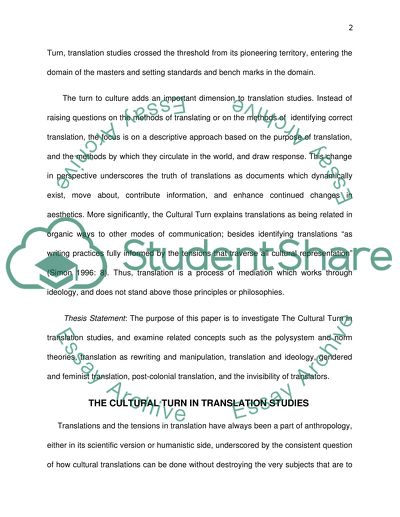Cite this document
(“Translation Studies: 'The cultural turn', it's origin, reasons for Essay”, n.d.)
Translation Studies: 'The cultural turn', it's origin, reasons for Essay. Retrieved from https://studentshare.org/miscellaneous/1587069-translation-studies-the-cultural-turn-its-origin-reasons-for-emergence-central-concepts-and-the-impact-it-made-on-the-decipline-of-translation-studies
Translation Studies: 'The cultural turn', it's origin, reasons for Essay. Retrieved from https://studentshare.org/miscellaneous/1587069-translation-studies-the-cultural-turn-its-origin-reasons-for-emergence-central-concepts-and-the-impact-it-made-on-the-decipline-of-translation-studies
(Translation Studies: 'The Cultural turn', it'S Origin, Reasons for Essay)
Translation Studies: 'The Cultural turn', it'S Origin, Reasons for Essay. https://studentshare.org/miscellaneous/1587069-translation-studies-the-cultural-turn-its-origin-reasons-for-emergence-central-concepts-and-the-impact-it-made-on-the-decipline-of-translation-studies.
Translation Studies: 'The Cultural turn', it'S Origin, Reasons for Essay. https://studentshare.org/miscellaneous/1587069-translation-studies-the-cultural-turn-its-origin-reasons-for-emergence-central-concepts-and-the-impact-it-made-on-the-decipline-of-translation-studies.
“Translation Studies: 'The Cultural turn', it'S Origin, Reasons for Essay”, n.d. https://studentshare.org/miscellaneous/1587069-translation-studies-the-cultural-turn-its-origin-reasons-for-emergence-central-concepts-and-the-impact-it-made-on-the-decipline-of-translation-studies.


